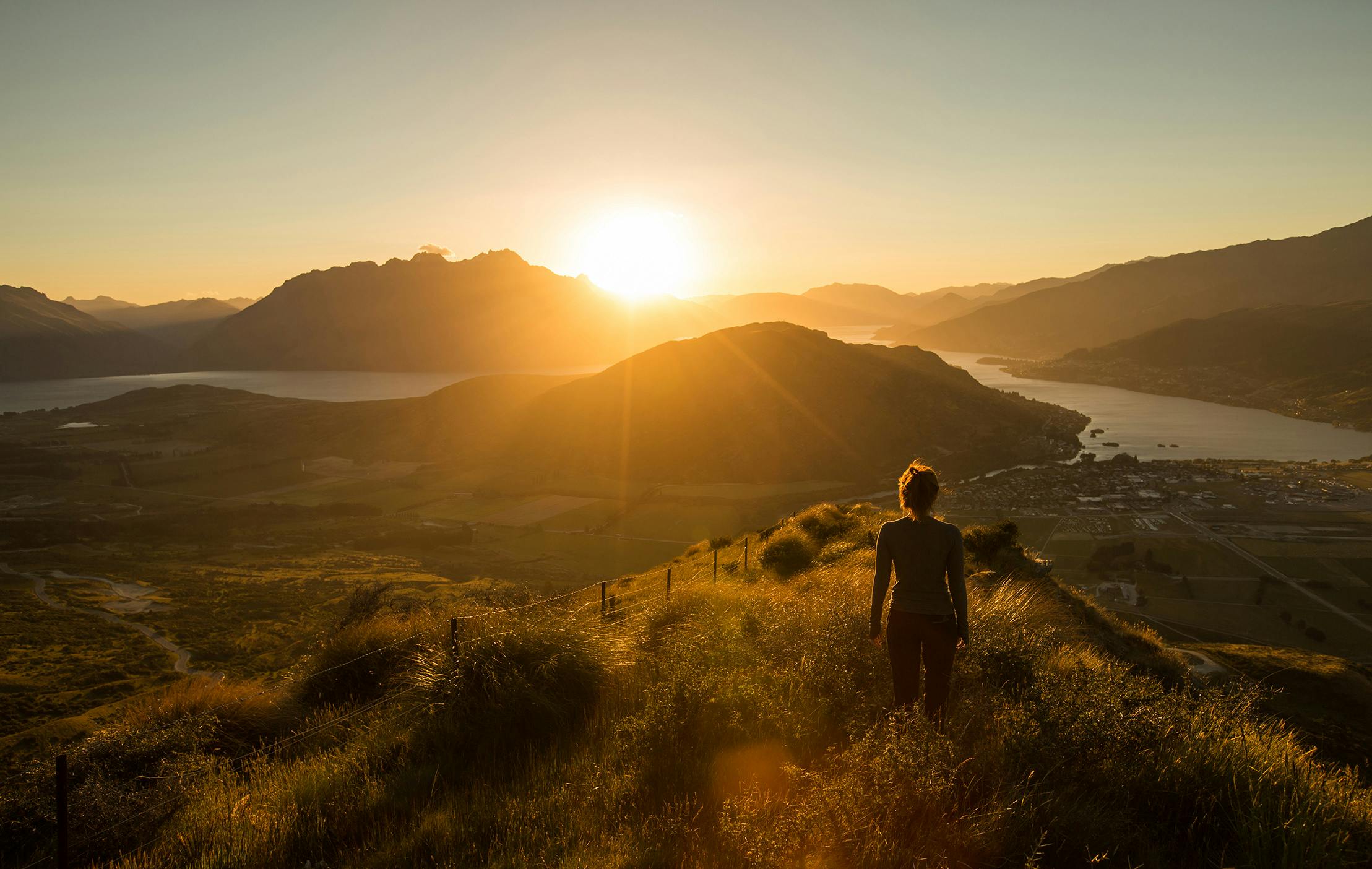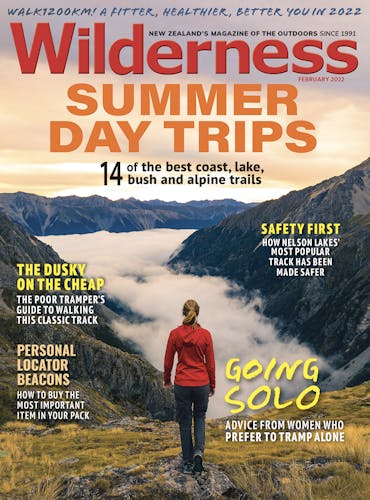When preparing to walk Te Araroa Trail solo, Jane Evans met several other women tramping on their own. She shares their stories and experiences.
I was planning to walk Te Araroa alone. I was happy enough but thought I had first better get in some solo, multi-day tramping experience. The Old Ghost Road was a comforting place to start, huge vistas, clear tracks and plenty of company in the huts at night. It was then straight onto Kahurangi National Park with increased solitude and time to sit on mountain tops with only kea for company. On this trip, I discovered I loved tramping alone; more than loved it. It surpassed all expectations, giving more time to focus on what I loved: maximum time in nature, long lunch breaks in stunning locations and just the right amount of socialising.
Kea weren’t the only ones playing in the mountains. I encountered other women tramping solo and heard how they enjoy the freedom of not compromising plans, speed, time or gear. Most said they felt safer in the mountains than in a city and have only ever met friendly, like-minded people.
Here, three of the women I met share their advice on tackling a tramp solo.
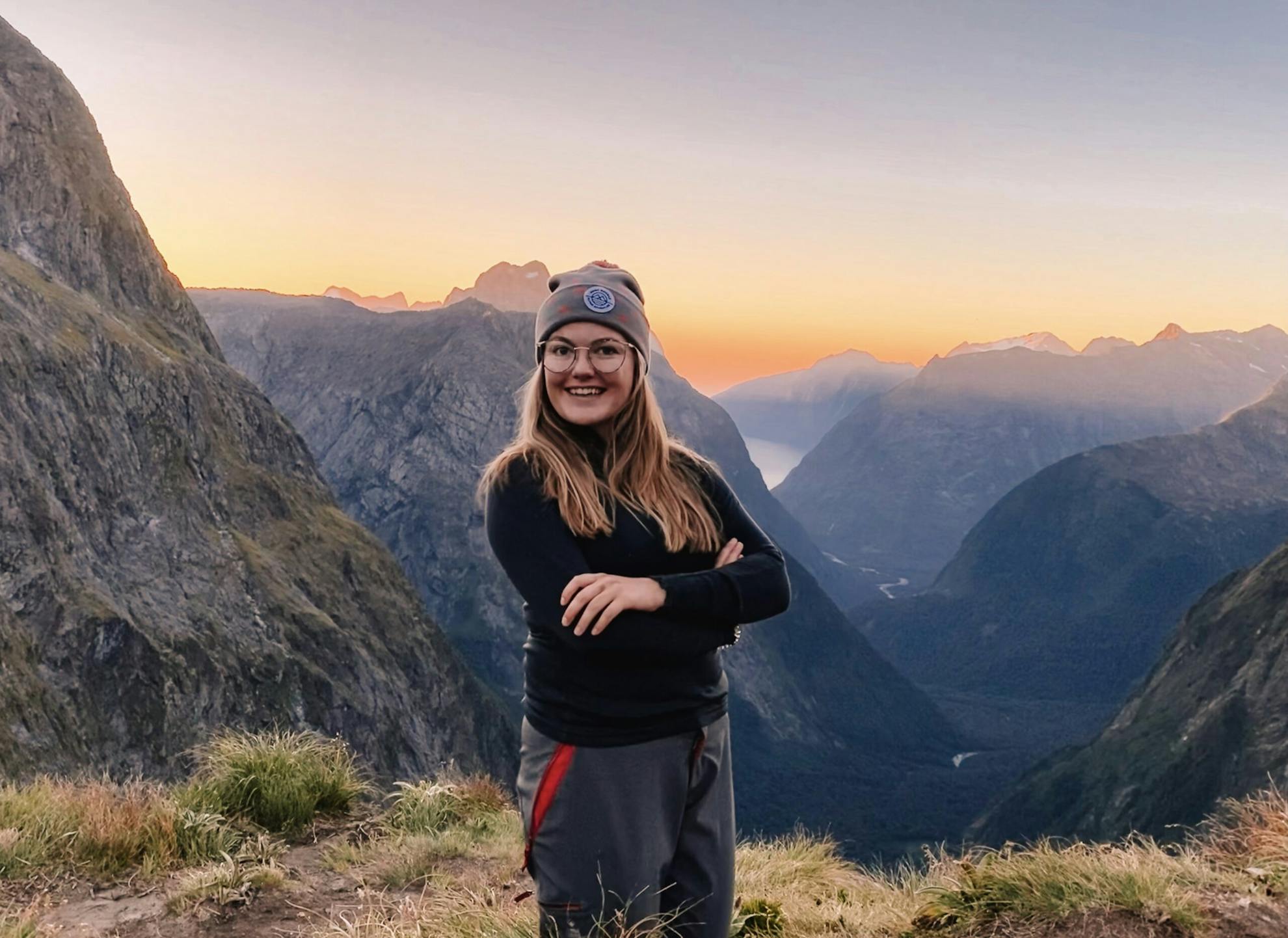
Kalena Stosser, 24
Background: “I started tramping as a toddler when my parents took me on local overnight trips. As I grew up, these trips became longer and harder and so did my love for the outdoors. Since leaving home I’ve been based in the Queenstown Lakes area which has no shortage of excellent tramping tracks.”
Why walk solo: “Primarily for the convenience; I could go whenever there was good weather and not have to adapt my plans because of others. As an introvert, this suited perfectly. “The peace of being alone in the wilderness was grounding. It helped me to be grateful for my situation and to see some of the most stunning places in the South Island. “I’ve found tramping solo to be incredibly empowering. Going into the wilderness trusting I will survive the night with everything that’s in my pack plus my skills and knowledge. My experience in the outdoors is a total gift.”
Best experience: “My most incredible hike was to Gertrude Saddle. I pitched my tent near the enormous cliff and I ate dinner accompanied by kea. The sun set beautifully over Milford Sound as the southern lights began behind me. It was totally surreal and (I was) not in the least bit lonely.”
Any fears or safety concerns: “The biggest fear is getting lost. You can easily lose sight of the orange markers, especially when there isn’t a clear path, then it doesn’t take long to lose your bearings. This is one of the risks that is most increased when alone. Mitigating this risk is easy: pack a map and compass and download maps. Keep track of landmarks, take note of the direction of river flow and stop as soon as you feel you’re off track.”
Pros of going solo: “I like to tramp within my comfort zone. I make sure I have a clear weather forecast, an extra day’s worth of food, a PLB and I leave intentions with a few friends and I don’t change my plans after that. These precautions help me feel less vulnerable. “Solo tramping can be safer in some ways. I only push myself as hard as I’m comfortable as there is no one else I need to prove myself to. I know I have the experience to complete the hike but when you tramp with others, you never quite know how they will behave if things go wrong or if the going gets tough. Will your group mates speak up if they are not feeling up to completing the remainder of the trip? Does someone have incurable summit fever? I never have to battle these questions when it’s just me.”
Cons of going solo: “Only what other people think or say when they see a young woman away from civilisation. I’ve had countless people question if I really do know enough to be where I am.”
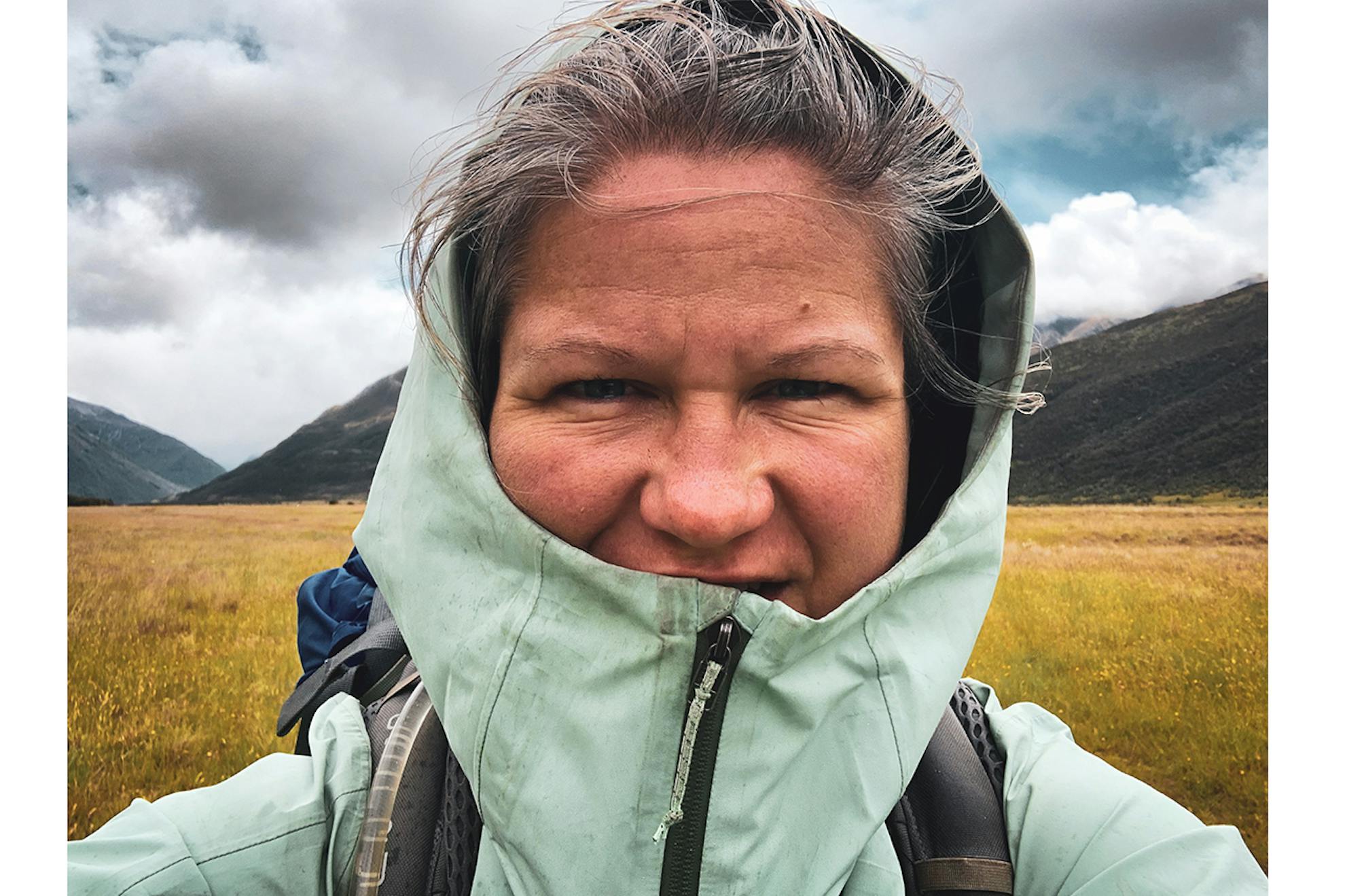
Zoe Marr, 38
Background: “Two years ago, fresh out of an abusive marriage, I spontaneously booked myself a trip to Rakiura to walk the North West Circuit. Other than a couple of day walks, I had no experience of tramping, but thought something difficult would take my mind off things. Everyone said I was mad; that just convinced me even more. I made heaps of mistakes and did not take enough food. But as I walked, I railed against everything that had happened to me over recent years and this started the healing process.”
Why walk solo: “I had a heap of leave to use up and decided to walk the South Island leg of Te Araroa. Knowing how cathartic I’d found my solo Stewart Island tramp, it never crossed my mind to tramp with another person. “Having mostly no phone signal leaves a person alone with their thoughts and I find walking concentrates my mind. I’m also an extremely slow tramper, and I hate the feeling of holding others up. That said, I love the company of other trampers at huts in the evening, which for me is just the right amount of social interaction.”
Best experience: “The biggest realisation for me came when I was struggling across boulders on Rakiura. I just wanted the whole thing to stop and go away. Realising that no one was going to help me and the only way to get through was to keep going, had a big impact on me.”
Any fears or safety concerns: “I’ve never been in a situation, while tramping, where another person has made me feel uncomfortable or in danger. I feel if a person wanted to do another person harm, there are far easier places to do it. “I feel prepared for emergencies always carrying a PLB, a tent and, after my Stewart Island experience, far too much food.”
Pros of going solo: “I can go at my own pace and be lost in my own thoughts. The lack of distractions allows me to be immersed in nature. It builds personal resilience and confidence and it’s possible to meet people at huts without having to interact all day.”
Cons of going solo: “I can’t think of one.”
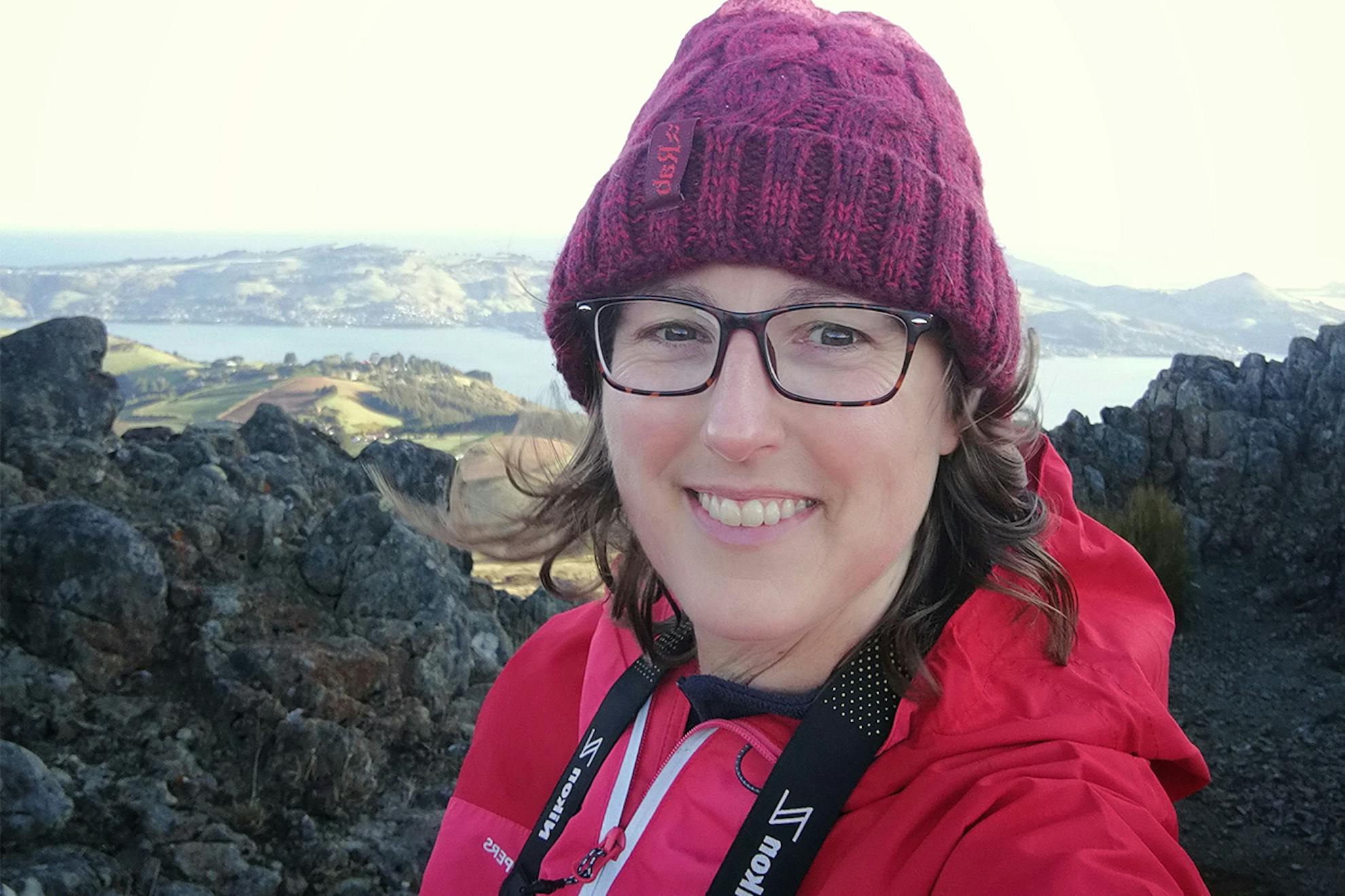
Debbie Cartwright, 48
Background: “I’ve always loved spending time outdoors but my first overnight tramp didn’t happen until I was 47. After my son left home, I separated from my partner and my life and time felt like my own again. I began doing day walks, sometimes spending the whole day in the bush and barely making it out before dark. “It felt increasingly necessary to go further and be more immersed in the experience, but I’d always assumed it was too dangerous for a woman to tramp alone.“Eventually I realised there were risks, but there are risks to everything we do and my fear only meant I was missing out. So in October last year, I put on a pack for the first time and tramped up Canyon Creek to spend the night in my bivvy bag. “I didn’t know what all the straps on the pack did, so it took many kilometres to get it fitting right. I was anxious and the weather wasn’t great. There were a few scary moments, but I loved it. A year later, I applied and became an ambassador for Lowe Alpine NZ – something I never would have expected!”
Why walk solo: “I occasionally tramp with others. But going solo is still the best. I enjoy the freedom of changing my plans at the last minute, going at my own pace, taking photos, going off-track, choosing my own route and campsite. I thrive on overcoming the physical and mental challenges along the way.”
Best experience: “Recently I tramped to Lake Angelus in Nelson Lakes National Park. The tops were covered in snow and completely clagged out. The track was barely visible through the gloom, with some markers buried by the snow. I couldn’t even see the hut until I reached it. Nobody else arrived, so I chopped some wood, lit the fire, and slept in front of it. Next morning it was still, the clag cleared to reveal a blue-tinged frozen lake surrounded by imposing mountains and rocky ridges. Being there alone as the sun began to touch the peaks felt spiritual and I walked out in wonder.”
Any fears and safety concerns: “I was a little afraid of everything. I did have a crippling fear of heights which I’ve overcome by putting myself through my own exposure therapy! I’m slowly becoming less scared in my tent at night – imagination feeds off all the strange noises. “Avalanches and river crossings scare me, because you can’t dig yourself out of an avalanche or pull yourself out of a river. They’re what kill trampers.”
Pros of going solo: “The biggest pro is the independence and personal achievement. Knowing you can survive in the wilderness without relying on anyone else is empowering. I feel physically and mentally stronger as a result. “Other trampers and hunters are more likely to make a connection with you, especially if they’re solo as well. I met 21-year-old Isaac in the Fiordland bush. I hadn’t seen anyone for hours, and for him it had been days. He was tramping to celebrate successful cancer treatment and the last of his chemo. There are amazing people out there with a story.”
Cons of going solo: “The biggest practical nuisance is having to start and finish in the same place. A more annoying downside are the assumptions from others that simply wouldn’t happen to a man. Once a hunter investigated my fire and tent and asked, “Where’s your husband?”, calling me “mad” for being alone. “Another time, I passed a cavalcade on my way into a valley. There was a storm overnight, but I’d been snug in my tent as the wind howled around. Next day I saw them again. They rushed up, expressing relief and exclaiming they’d been so worried about me they hadn’t slept a wink. I almost felt guilty. On top of experiences like these, there’s the usual concern and questioning from others that all solo women trampers tend to experience: do you have a PLB, do you realise how steep it is, how far it is, how cold it’ll be overnight? “The answer is yes, that’s why I’m here.”





